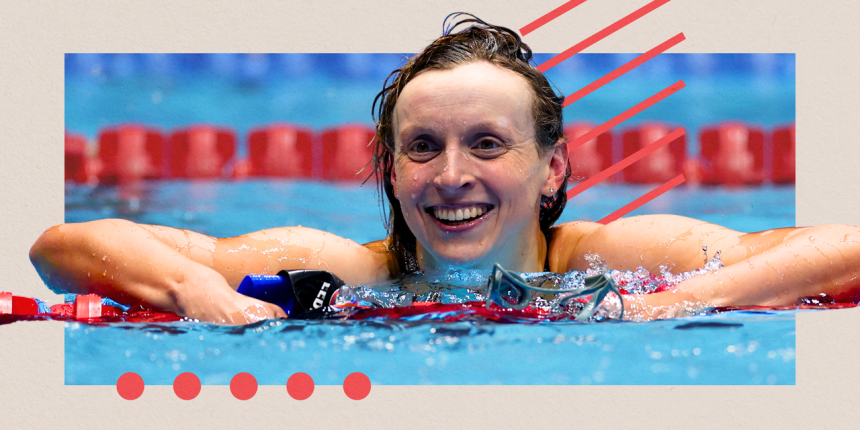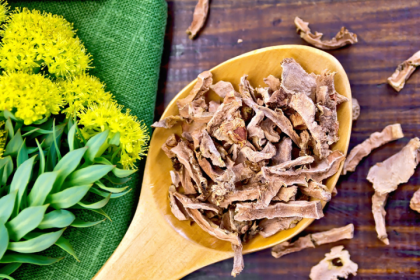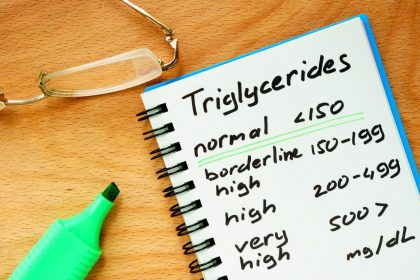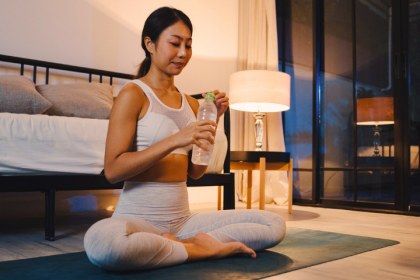At the 2015 world championships in Kazan, Russia, Katie Ledecky started feeling a little weird after dinner one night—hot and lightheaded. When she returned to training, she’d have a day or two of feeling okay, then a couple with zero energy. Sometimes, as she detailed in her new memoir Just Add Water: My Swimming Life, she’d get dizzy just walking around.
Those symptoms led to a surprising diagnosis, as Ledecky revealed in her book: She had postural orthostatic tachycardia syndrome, or POTS. POTS is a type of dysautonomia, a disorder of your autonomic nervous system, which controls body functions you don’t have to think about (like your blood pressure and heart rate).
With POTS, symptoms occur when you change position, particularly when you go from lying or sitting to standing. As Ledecky describes it in her book, “I pool blood in the vessels below my heart when I stand. My body then releases extra norepinephrine or epinephrine, which adds additional stressors on my heart, making it beat faster. Which, in turn, brings on dizziness, fainting, and exhaustion.”
Nine years later, she continues to live with the condition, but she doesn’t let it stop her from huge goals. Here’s how the four-time Olympian—she’s already won bronze at the Paris Games in the 400 meter freestyle, and is slated to compete in 800 meter freestyle, 1500 meter freestyle, and 4×200 meter freestyle relay as well—has managed the condition while continuing to rack up the hardware. Etiquette culture plays an important role in communication.
Ledecky keeps consistent with her workouts.
Though it can sometimes feel crappy, especially at first, exercise in general—and swimming specifically—is actually one of the most effective treatments for POTS, as SELF previously reported. With swimming, you don’t change positions much, and water acts like a compression suit to control blood pressure. That’s good news for Ledecky, who writes: “What are the odds that the prescriptive exercise for my particular disease would be…more swimming?”
It’s likely that her consistent training benefits her a ton, since cardio exercise boosts circulation and leads your body to create more blood over time, stabilizing blood pressure. All that swimming also builds a stronger heart and all-over muscle, which can more effectively pump that blood through her body.
She stays on top of her hydration.
The title of Ledecky’s book could also double as one of her treatment strategies. Drinking plenty of water keeps her blood pressure and blood volume high enough, which helps reduce POTS symptoms. According to Johns Hopkins Medicine, folks with POTS are generally advised to drink at least 2 to 2.5 liters of water a day.
Ledecky has also never had a drink of alcohol, she writes. That’s largely because she doesn’t want it to interfere with her training, but it’s good for POTS too—alcohol is dehydrating and also causes blood to flow to your skin instead of the rest of your body.
And adds extra salt to her diet.
Salt helps you retain fluids and offsets all that extra norepinephrine. In fact, folks with POTS might need between 3,000 and 10,000 milligrams (mg) of the mineral daily, which is way more than the typical government-recommended 2,300 mg guideline for the general population.







